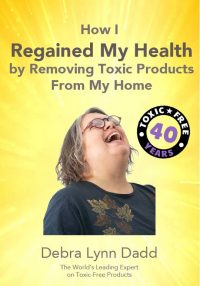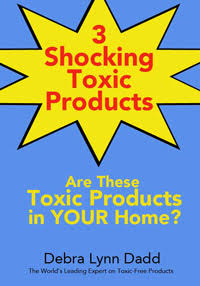
Water | Swimming Pools
Cleaning the Chimney
Question from P
The lease on my new rental says I have to pay to get the chimney cleaned upon my move-in and show the receipt. (Apparently this is the silly practice–you pay to clean up after the previous tenant, and then you leave it dirty when you move out. Of course, I don’t plan on using it, but whatever!) Are the cleaning products chimney sweeps use toxic?
Debra’s Answer
There are no chemicals used to clean chimneys. A high speed rotary “brush” expands scrubs the entire flue area, the smoke chamber above the damper, and the firebox. A vacuum is set up at the bottom to collect all the dust and debris before it enters your home. I had my chimney cleaned some years ago when I lived in California and had a chimney. There was no odor.
Old Carpet in Rental
Question from P
What’s the best thing to do moving into a rental with an old carpet with dust mites and other yuckies? We are allergic to everthing! Should I rent a machine from the grocery store, and omit the soap (just use water)? Or will this simply make it damp/promote mold? Or will this help remove some of the inevitable previous toxic cleaning attempts from previous owners? Should I just vacuum really good and then throw area rugs overtop?
Debra’s Answer
I would probably vacuum it really well and put area rugs on top (though this won’t block toxic fumes, if there are any).
See if it’s possible to remove the rug. Since it’s so old and yucky, the owner may be wanting to replace it anyway. They may allow you to remove it and then install a new one when you move. I’ve done this in the past and it worked! There were beautiful hardwood floors underneath.
Bladder infection
Question from Barbara
Is there a natural product to help relieve a bladder infection? I don’t want to take a prescription med. because I’ve been getting them frequently.
Debra’s Answer
Try cranberry juice. Readers, any other suggestions that have worked for you?
How long to avoid new paint?
Question from Katie
I am chemically sensitive and still getting used to what causes reactions, etc.
I’m wondering how long paint off-gasses, and for what length of time it is recommended for a chemically-sensitive individual to avoid a building or room which has been recently painted? Thank you!
Debra’s Answer
It really depends very much on the type of paint used and the degree of sensitivity of the individual.
Water-based low-VOC paints will usually dry within a couple of days. The warmer the weather and the dryer the air, the faster the paint will dry. Closing up a room with a space heater inside will make it dry faster.
That said, some people with MCS report still reacting to paint after a year.
No more objections to stevia by FDA
The news today is that the U.S. Food and Drug Administration (FDA) has no objection to the findings of an independent expert panel concluded that rebaudioside A (rebiana), the sweet component of stevia, is generally recognized as safe (GRAS) for use as a general purpose sweetener. This means that stevia can now be used in food products.
The first stevia product I’ve seen advertised is Truvia. It has been available in limited distribution since July of this year, but is now being advertised on television. Truvia will also be a sweetener used in processed food products.
Though this product has some advertising that wants to lead you to think it is natural, it is natural only in the sense that it comes from plants–it is highly processed, and not pure stevia. The first ingredient is eurythritol, then rebiana extracted from stevia, plus natural flavors.
Eurythritol don’t occur in nature in any appreciable amount that can be collected. There is no eurythritol hive or tree or plant. The amount that nature has provided in fruits and vegetables is miniscule, and in the context of lots of water and fiber in other nutrients. Though eurythritol is made through a natural fermentation process, it is a manufactured product–you can’t go collect eurythritol in nature somewhere and use it as a sweetener.
So what we have here is a combination of two substances that occur in nature in miniscule amounts (along with water and fiber and other co-factors), extracted and concentrated into a sweetener (with no water and fiber and other co-factors).
Stevia and eurythritol are perfectly fine to ingest in their natural context, but I would rather eat whole foods as nature intended, rather than concentrated extracts.
I do eat stevia. I pick the leaves from a pot of stevia plants outside my kitchen door and munch on them. I steep it along with other herbs to make sweet tea. But I personally am not going to put extracts concentrated by industrial processes in my body when there are many naturally sweet foods to enjoy.






